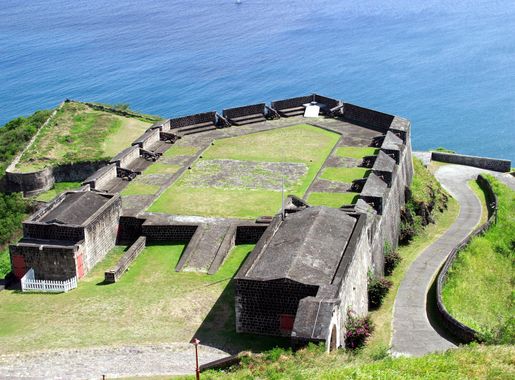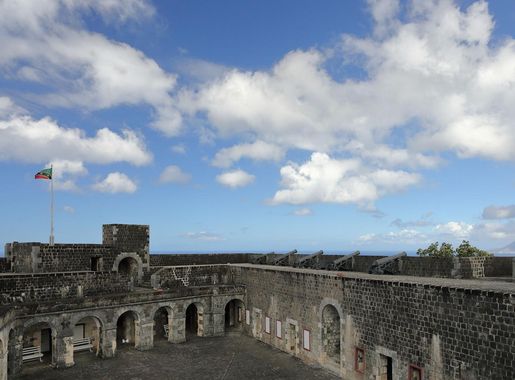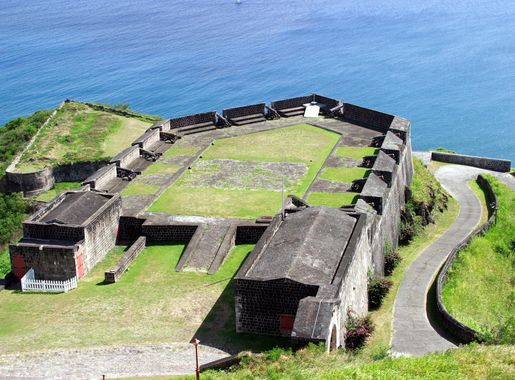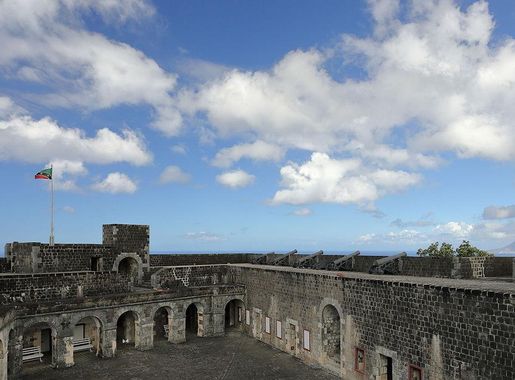
The Majestic Brimstone Hill Fortress: A Timeless Sentinel
Explore the historic Brimstone Hill Fortress National Park in Saint Kitts, a UNESCO World Heritage Site offering stunning views, rich history, and natural beauty.
Nestled on the picturesque island of Saint Kitts, the Brimstone Hill Fortress National Park stands as a testament to centuries of history and heritage. This UNESCO World Heritage Site offers visitors a unique window into the past, with its well-preserved military architecture and breathtaking views of the Caribbean Sea. Constructed by African slaves and British military engineers, the fortress is an enduring symbol of the island's colonial past. The fortress is situated atop a steep hill, providing stunning panoramic views that are worth the climb. As you explore the grounds, you will encounter a series of well-preserved structures, including the Citadel, the Fort George Museum, and the Prince of Wales Bastion. Each corner of the park tells a story, from the strategic importance of the fortress during the 18th century to the daily lives of the soldiers stationed there. Beyond its historical significance, Brimstone Hill Fortress National Park is a haven for nature lovers. The park is home to a variety of flora and fauna, making it a delightful spot for bird watching and leisurely walks. The serene environment, coupled with the rich history, creates an unforgettable experience for every visitor.
Local tips in Brimstone Hill Fortress National Park
- Wear comfortable shoes for the climb up the steep hill.
- Visit early in the morning to avoid the midday heat and crowds.
- Bring a hat and sunscreen as there is limited shade on the grounds.
- Don't miss the Fort George Museum for an in-depth look at the fortress's history.
- Keep an eye out for local wildlife, especially various bird species.
The Majestic Brimstone Hill Fortress: A Timeless Sentinel
Nestled on the picturesque island of Saint Kitts, the Brimstone Hill Fortress National Park stands as a testament to centuries of history and heritage. This UNESCO World Heritage Site offers visitors a unique window into the past, with its well-preserved military architecture and breathtaking views of the Caribbean Sea. Constructed by African slaves and British military engineers, the fortress is an enduring symbol of the island's colonial past. The fortress is situated atop a steep hill, providing stunning panoramic views that are worth the climb. As you explore the grounds, you will encounter a series of well-preserved structures, including the Citadel, the Fort George Museum, and the Prince of Wales Bastion. Each corner of the park tells a story, from the strategic importance of the fortress during the 18th century to the daily lives of the soldiers stationed there. Beyond its historical significance, Brimstone Hill Fortress National Park is a haven for nature lovers. The park is home to a variety of flora and fauna, making it a delightful spot for bird watching and leisurely walks. The serene environment, coupled with the rich history, creates an unforgettable experience for every visitor.
When is the best time to go to Brimstone Hill Fortress National Park?
Iconic landmarks you can’t miss
Prince of Wales Bastion
Discover the Prince of Wales Bastion, a stunning 18th-century fort in St. Kitts, offering breathtaking views and a glimpse into the island's rich history.
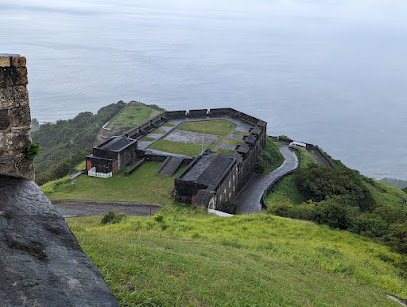
Brimstone Hill Fortress National Park Society
Explore the historic Brimstone Hill Fortress, a UNESCO World Heritage site in St. Kitts, showcasing stunning views and rich colonial history.
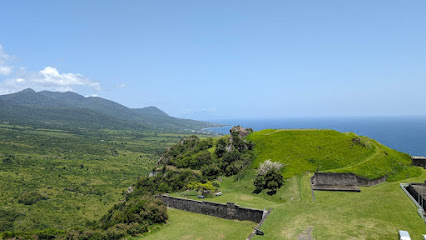
Unmissable attractions to see
Timothy Hill Overlook
Experience the stunning views and serene beauty of Timothy Hill Overlook, a must-visit attraction in St. Kitts & Nevis.
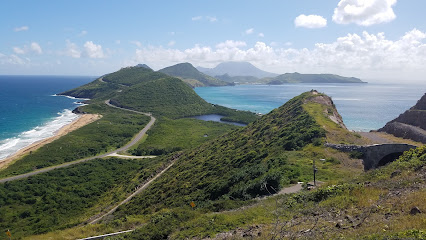
Dolphin Discovery Saint Kitts
Experience the thrill of swimming with dolphins in the beautiful Caribbean waters at Dolphin Discovery Saint Kitts - a must-visit attraction for every tourist.
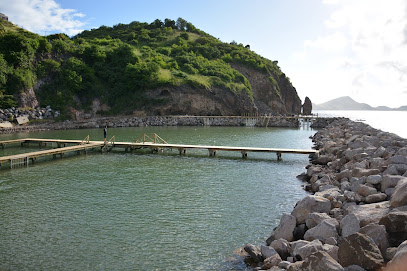
Frigate Bay
Explore Frigate Bay, a stunning Caribbean beach destination in St. Kitts, perfect for relaxation, adventure, and vibrant nightlife experiences.

Mount Liamuiga Trailhead
Immerse yourself in the breathtaking landscapes of Mount Liamuiga Trailhead, a premier hiking destination in St. Kitts offering stunning views and rich biodiversity.

Liamuiga Natural Farm
Explore the lush landscapes of Liamuiga Natural Farm in St. Kitts & Nevis, where nature and sustainable agriculture come together for a delightful experience.
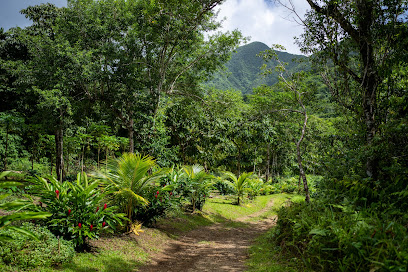
Prince of Wales Bastion
Explore the Prince of Wales Bastion in Sandy Point Town for a glimpse into the colonial history and stunning views of St. Kitts & Nevis.

Bat Cave Hike
Experience the breathtaking beauty of St. Kitts & Nevis on the thrilling Bat Cave Hike, where adventure meets nature's wonders.
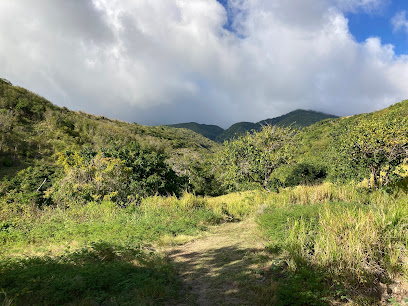
Mount Liamuiga Trailhead to True Summit
Discover the breathtaking hiking experience at Mount Liamuiga Trailhead, where adventure meets stunning Caribbean landscapes in St. Kitts & Nevis.

National Hero Park
Experience the serene beauty and rich history of National Hero Park in Conaree Village, a tribute to the heroes of St. Kitts and Nevis.
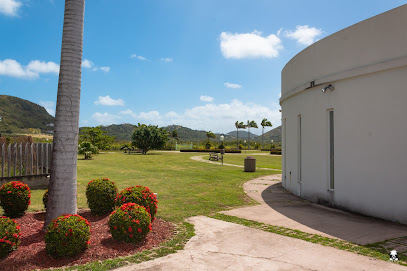
Robert L. Bradshaw
Discover the serene Robert L. Bradshaw Memorial Park, a tribute to history amidst stunning landscapes in St. Kitts & Nevis.
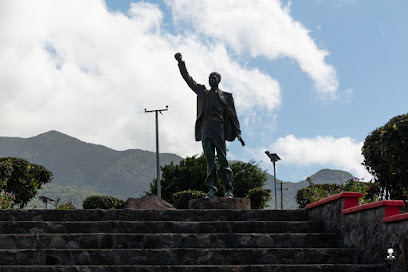
Sandy Point Old Recreation Ground
Explore the natural beauty of Sandy Point Old Recreation Ground in St. Kitts & Nevis, a peaceful park perfect for relaxation and local culture.
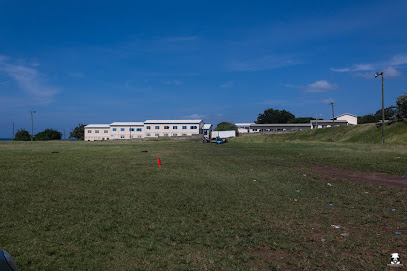
HI
Explore the historic charm and vibrant culture of Basseterre, St. Kitts, where stunning architecture meets breathtaking coastal views for an unforgettable Caribbean experience.

St Kitts Tour Dune buggy and beach
Explore St. Kitts like never before with exhilarating dune buggy tours through breathtaking landscapes and hidden gems of the island.
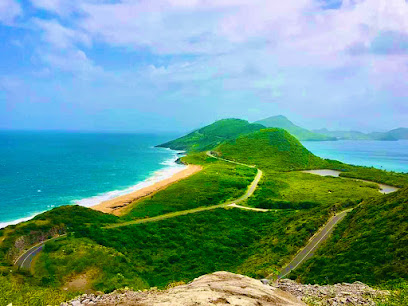
Essential places to dine
Reggae Beach Bar-Grill
Discover Reggae Beach Bar-Grill: A vibrant grill offering delicious Caribbean cuisine and stunning ocean views in St. Kitts & Nevis.
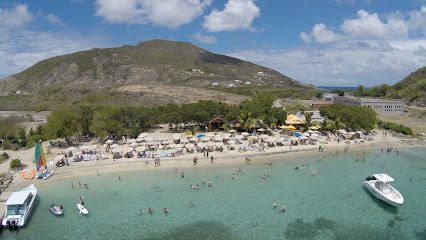
Carambola Beach Club
Experience exquisite dining with breathtaking ocean views at Carambola Beach Club in St. Kitts.
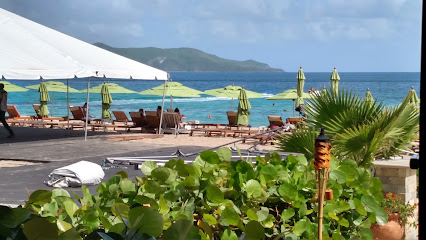
Shipwreck Beach Bar
Discover the flavors of St. Kitts at Shipwreck Beach Bar – where tropical vibes meet mouthwatering cuisine in a stunning beachfront setting.

Sprat Net
Experience authentic Caribbean cuisine at Sprat Net - where fresh seafood meets breathtaking views in St. Kitts & Nevis.
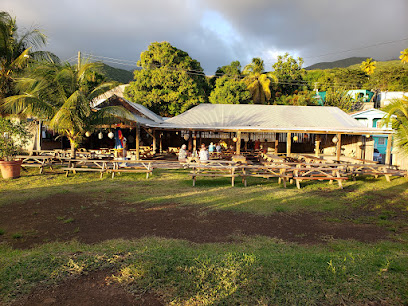
Spice Mill Restaurant
Experience authentic Caribbean cuisine with breathtaking views at Spice Mill Restaurant in New Castle, St. Kitts & Nevis.

Palms Court Gardens
Experience culinary delights surrounded by nature's beauty at Palms Court Gardens in St. Kitts & Nevis.
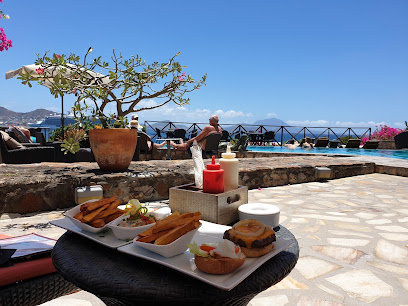
Yachtsman Grill
Experience exquisite seafood and Caribbean flavors at Yachtsman Grill while enjoying breathtaking ocean views in Nevis.
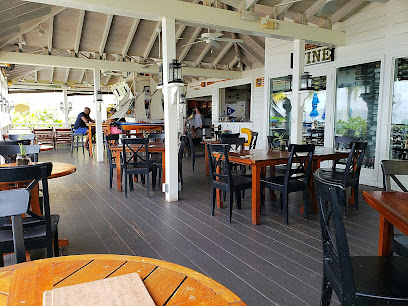
Salt Plage at Christophe Harbour
Discover Salt Plage at Christophe Harbour: A beautiful beachfront restaurant offering fresh Caribbean cuisine and breathtaking ocean views.
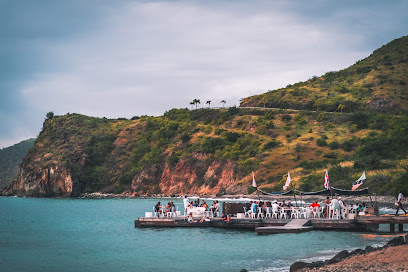
Boozies on The Beach
Experience Caribbean flavors at Boozies on The Beach – where every meal comes with stunning ocean views and vibrant island vibes.
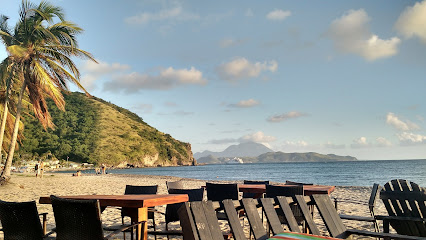
Turtle Time Bar & Grill
Discover culinary delights at Turtle Time Bar & Grill on Pinney's Beach - where Caribbean flavors meet stunning ocean views.
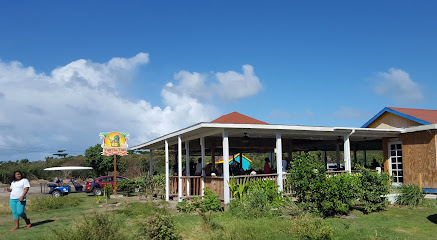
Arthur's Restaurant & Bar
Discover delightful Caribbean flavors at Arthur's Restaurant & Bar with breathtaking views of Dieppe Bay Beach.
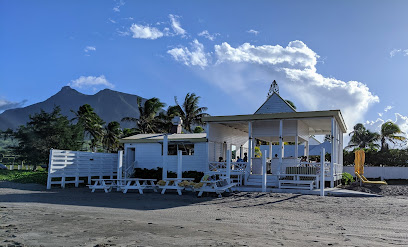
Sweet Cane | Restaurant & Bar
Discover authentic Caribbean flavors at Sweet Cane Restaurant & Bar in Basseterre - where culinary tradition meets island vibes.
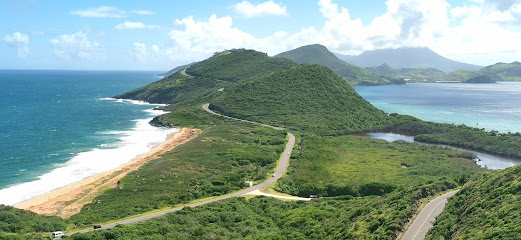
Cathy's Ocean View | Bar and Grill (open for lunch on ship day from 12pm to 3:30pm)
Discover delicious Caribbean cuisine at Cathy's Ocean View in Frigate Bay with stunning ocean views and a vibrant atmosphere.
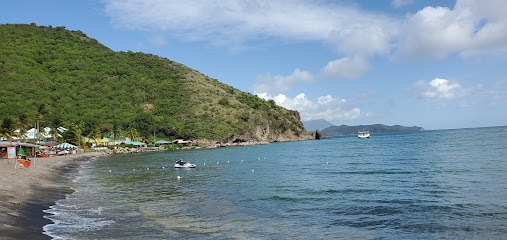
El Fredo's
Experience authentic Caribbean flavors at El Fredo's in Basseterre – where great food meets friendly service in a vibrant setting.
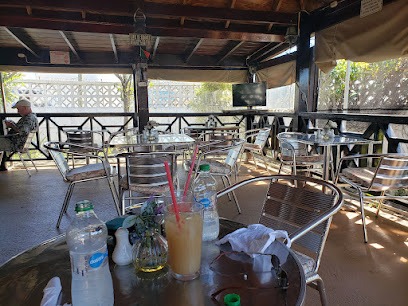
Jamrock Restaurant and Bar
Experience authentic Caribbean flavors at Jamrock Restaurant and Bar on Frigate Bay Strip—where every meal is a celebration of St. Kitts culture.
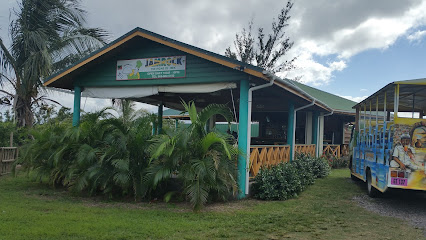
Markets, malls and hidden boutiques
Brimstone Hill Fortress National Park
Explore Brimstone Hill Fortress National Park – a UNESCO World Heritage site rich in history and breathtaking views of St. Kitts & Nevis.
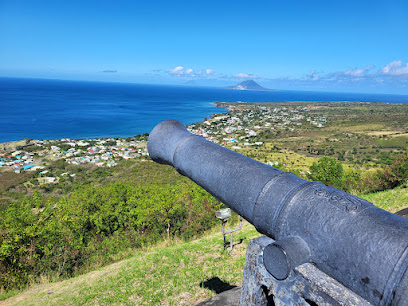
Caribelle Batik at Romney Manor
Explore the vibrant Batik art and stunning botanical gardens at Caribelle Batik, a serene escape in St. Kitts that celebrates local craftsmanship.

Blackrocks Gift Shops
Explore local crafts and souvenirs while enjoying breathtaking views at Blackrocks Gift Shops in Belle Vue, St. Kitts & Nevis.
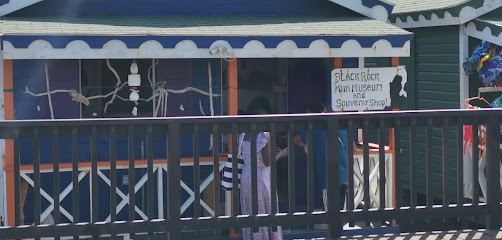
Dollar Stretcher
Discover budget-friendly shopping at Dollar Stretcher in Sandy Point Town, your go-to supermarket for local and international groceries.
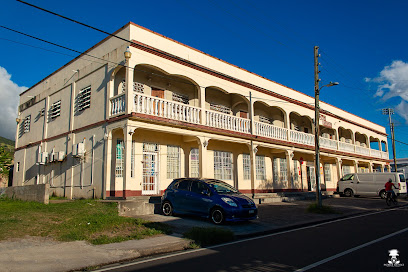
Bougainvillea Books & Gifts
Explore Bougainvillea Books & Gifts in Basseterre, St. Kitts & Nevis for unique crafts and books that showcase Caribbean culture.

B's Superette
Discover local flavors and essentials at B's Superette, your go-to supermarket in Sandy Point Town, St. Kitts & Nevis.

E&K Mini Mart Station Street Sandy Point
Discover local flavors and essentials at E&K Mini Mart, the go-to supermarket in Sandy Point, St. Kitts & Nevis.

I LOVE ST. KITTS STORE
Explore I LOVE ST. KITTS STORE for unique souvenirs that capture the essence of St. Kitts, from handcrafted gifts to local treasures.

Daniel's Hardware
Explore Daniel's Hardware in Sandy Point for a wide selection of tools and materials, perfect for all your home improvement projects while in St. Kitts.
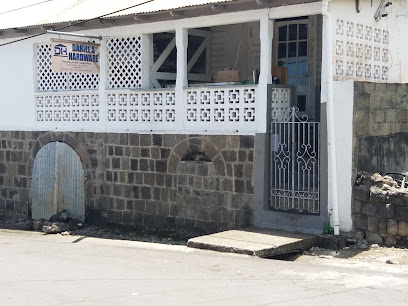
Happy Shopping Supermarket
Experience the taste of St. Kitts at Happy Shopping Supermarket, your go-to spot for local groceries and Caribbean delicacies.
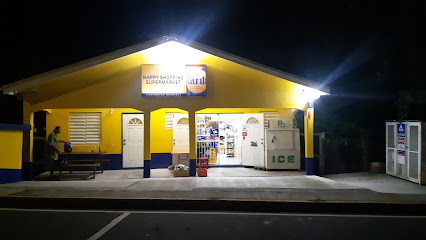
Desires
Explore the vibrant gift shop 'Desires' in Basseterre, offering unique handcrafted items and local art perfect for capturing your Caribbean adventure.
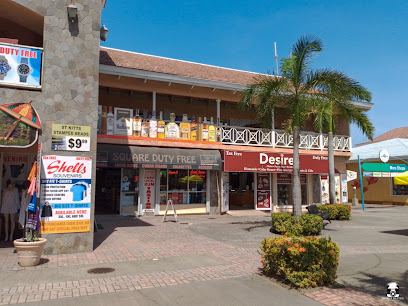
Link uP Bar
Discover the vibrant atmosphere of Link uP Bar in Fig Tree, St. Kitts, where beach entertainment meets local culture and flavor.
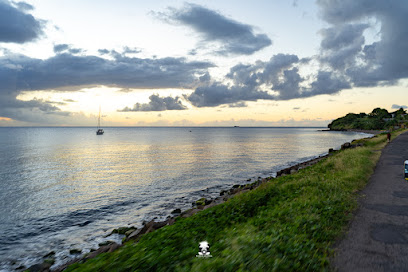
RSR Enterprise
Discover the vibrant local culture and flavors at RSR Enterprise, your go-to grocery store in Old Road Town, St. Kitts & Nevis.
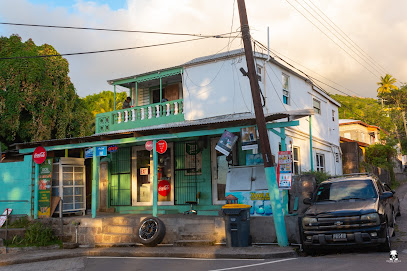
Sassy V. Collectibles
Explore unique handbags at Sassy V. Collectibles in St. Kitts, blending local craftsmanship with vibrant fashion for every style and occasion.

Annie Jones Bakery
Discover the delightful flavors of Caribbean baked goods at Annie Jones Bakery in Sandy Point Town, a must-visit spot for all pastry lovers.

Essential bars & hidden hideouts
Railway Bar And Grill
Experience the best of Caribbean cuisine at Railway Bar And Grill, where flavor meets stunning views in Nevis.
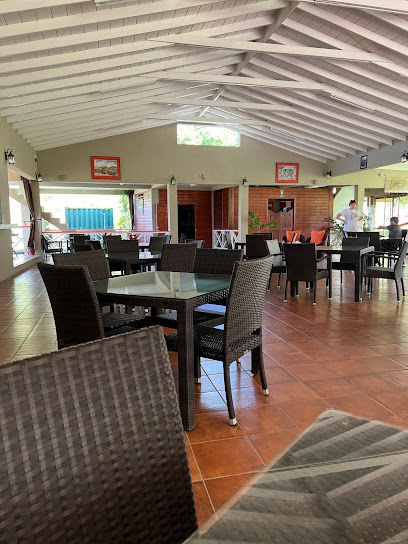
Cool Runnings Bar & Grill
Experience the flavors of the Caribbean at Cool Runnings Bar & Grill, where lively ambiance meets delicious grilled delights in Basseterre.
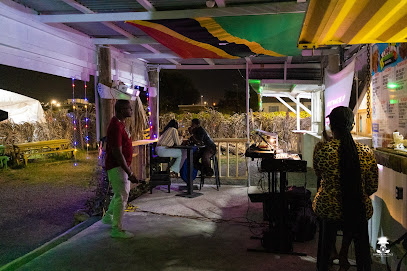
Rum Dawg Beach Bar & Grill
Unwind at Rum Dawg Beach Bar & Grill, where Caribbean flavors meet breathtaking ocean views in St. Kitts.
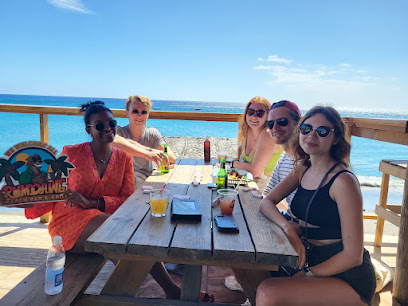
Rovers Bar
Discover the vibrant atmosphere of Rovers Bar in St. Kitts, where local charm meets island hospitality for an unforgettable experience.
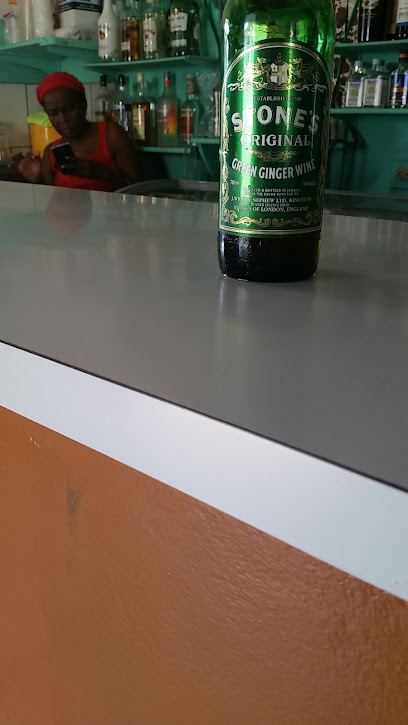
CocoPlums Garden Bar & Grill
Experience the flavors of the Caribbean at CocoPlums Garden Bar & Grill, where every meal is a celebration of local ingredients and culinary creativity.

Bill A Vybez Bar Snackette & Grill
Experience the vibrant flavors and warm hospitality at Bill A Vybez Bar Snackette & Grill in Sandy Point, St. Kitts & Nevis.
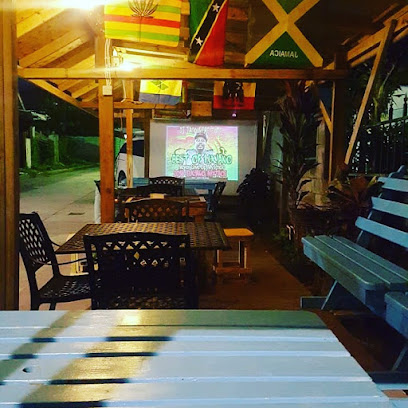
Alecia one stop shop
Discover the vibrant local culture at Alecia One Stop Shop, a welcoming bar in Half Way Tree, St. Kitts, perfect for relaxation and socializing.

Tasha’s Chill Spot
Discover the flavors of St. Kitts & Nevis at Tasha’s Chill Spot, where local cuisine meets a relaxing atmosphere in Sandy Point Town.
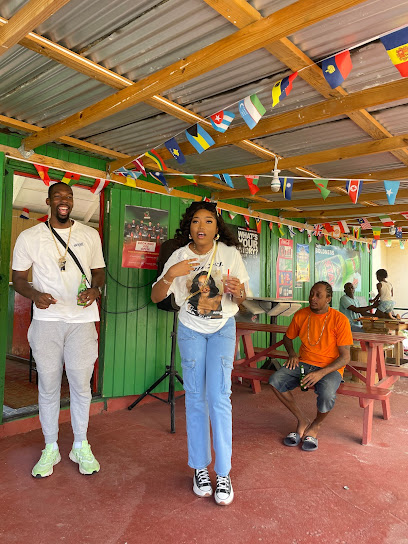
Stress Out Bar
Discover the flavors of St. Kitts & Nevis at Stress Out Bar – where Caribbean charm meets delicious grill cuisine.
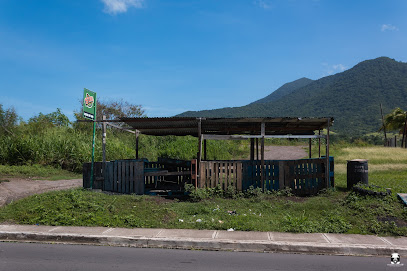
Meri & Tone Snackette
Experience the vibrant flavors of St. Kitts at Meri & Tone Snackette, where local culture meets delicious Caribbean snacks.
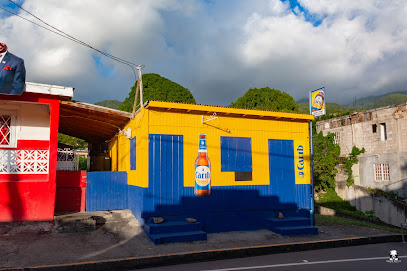
Off The Grid Bar & Grill
Experience the vibrant flavors of the Caribbean at Off The Grid Bar & Grill in Belle Vue, St. Kitts & Nevis, where delicious grilled dishes meet a warm atmosphere.

Black Rock Pub
Discover Black Rock Pub in Belle Vue, a vibrant bar offering refreshing drinks and a friendly atmosphere for tourists to relax and enjoy the Caribbean vibe.

Ryan's Bar & Grill
Experience the vibrant flavors of the Caribbean at Ryan's Bar & Grill in Old Road Town, St. Kitts, where delicious grilled dishes meet friendly hospitality.
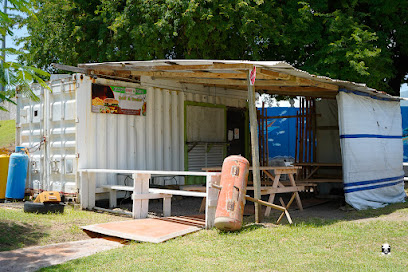
Gyalhattan Bar & Snackette
Discover the vibrant flavors of the Caribbean at Gyalhattan Bar & Snackette in Old Road Town, where delightful snacks and refreshing drinks await.
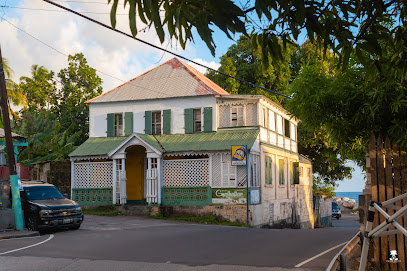
Under De Step Bar
Experience the vibrant flavors of Caribbean cuisine at Under De Step Bar, a must-visit grill in St. Kitts & Nevis.

Local Phrases about Brimstone Hill Fortress National Park
-
- HelloBonjour
[bon-zhoor] - GoodbyeAu revoir
[oh re-vwahr] - YesOui
[wee] - NoNon
[nohn] - Please/You're welcomeS'il vous plaît/De rien
[seel voo pleh/dee ryen] - Thank youMerci
[mehr-see] - Excuse me/SorryExcusez-moi/Désolé
[ex-kew-zay mwa/day-zo-lay] - How are you?Comment ça va?
[koh-mohn sah vah] - Fine. And you?Bien. Et vous?
[byen. ay voo] - Do you speak English?Parlez-vous anglais?
[par-lay voo ahn-glay] - I don't understandJe ne comprends pas
[zhuh nuh kohm-prahnd pah]
- HelloBonjour
-
- I'd like to see the menu, pleaseJe voudrais voir la carte, s'il vous plaît
[zhuh voo-dray vwahr lah kart, seel voo pleh] - I don't eat meatJe ne mange pas de viande
[zhuh nuh mahnj pah duh vyand] - Cheers!Santé!
[sahn-tay] - I would like to pay, pleaseJe voudrais payer, s'il vous plaît
[zhuh voo-dray pay-yay, seel voo pleh]
- I'd like to see the menu, pleaseJe voudrais voir la carte, s'il vous plaît
-
- Help!Au secours!
[oh suh-koor] - Go away!Allez-vous en!
[al-ay vooz ahn] - Call the Police!Appelez la police!
[ah-puh-lay lah po-lees] - Call a doctor!Appelez un médecin!
[ah-puh-lay uh may-duh-sahn] - I'm lostJe suis perdu
[zhuh swee pair-doo] - I'm illJe suis malade
[zhuh swee mah-lahd]
- Help!Au secours!
-
- I'd like to buy...Je voudrais acheter...
[zhuh voo-dray ah-shet-ay] - I'm just lookingJe regarde juste
[zhuh ruh-gard zhust] - How much is it?Combien ça coûte?
[kohm-byen sah koot] - That's too expensiveC'est trop cher
[say troh shay] - Can you lower the price?Pouvez-vous baisser le prix?
[poo-vay voo bay-say luh pree]
- I'd like to buy...Je voudrais acheter...
-
- What time is it?Quelle heure est-il?
[kel uhr ay-teel] - It's one o'clockIl est une heure
[eel ay oon uhr] - Half past (10)Dix et demie
[dees ay duh-mee] - MorningMatin
[mah-tan] - AfternoonAprès-midi
[ah-pray mee-dee] - EveningSoir
[swahr] - YesterdayHier
[yehr] - TodayAujourd'hui
[oh-zhoor-dwee] - TomorrowDemain
[duh-mahn] - 1Un
[uhn] - 2Deux
[duh] - 3Trois
[twah] - 4Quatre
[kah-truh] - 5Cinq
[sank] - 6Six
[sees] - 7Sept
[sept] - 8Huit
[wheat] - 9Neuf
[nuf] - 10Dix
[dees]
- What time is it?Quelle heure est-il?
-
- Where's a/the...?Où est...?
[oo ay] - What's the address?Quelle est l'adresse?
[kel ay lah-dress] - Can you show me (on the map)?Pouvez-vous me montrer (sur la carte)?
[poo-vay voo muh mohn-tray (soor lah kart)] - When's the next (bus)?Quand est le prochain (bus)?
[kohn ay luh proh-shay (boos)] - A ticket (to ....)Un billet (pour ...)
[uhn bee-yay (poor)]
- Where's a/the...?Où est...?
History of Brimstone Hill Fortress National Park
-
The origins of Brimstone Hill Fortress date back to the late 17th century when the British began fortifying the hill to protect their valuable sugar plantations from foreign invaders. The first battery, known as the 'Brimstone Hill Battery,' was constructed in 1690 by Colonel William Stapleton. The strategic location offered a panoramic view of the surrounding Caribbean Sea, making it an ideal defensive position.
-
Throughout the 18th century, Brimstone Hill Fortress underwent significant expansion, with major construction phases taking place between 1690 and 1790. The fortress was primarily built using volcanic stone, which was quarried from the local area. The intricate design and engineering feats of the fortress earned it the nickname 'The Gibraltar of the West Indies.' The fortress includes several key structures such as the Citadel, the Prince of Wales Bastion, and the Soldier's Barracks.
-
One of the most pivotal events in the history of Brimstone Hill Fortress occurred in January 1782 during the American War of Independence. A French fleet, under the command of Admiral François Joseph Paul de Grasse, laid siege to the fortress. Despite a valiant defense by the British, the fortress fell after a month-long siege. The French victory was short-lived, however, as the Treaty of Paris in 1783 restored control of Saint Kitts and Nevis to the British.
-
Following the Treaty of Paris, the British reoccupied Brimstone Hill Fortress and undertook extensive repairs and enhancements. New defensive structures were added, including additional barracks, cisterns, and powder magazines. By the early 19th century, the fortress had become one of the most formidable military installations in the Caribbean.
-
With changing military technologies and tactics, Brimstone Hill Fortress gradually lost its strategic importance. By the mid-19th century, the British began to reduce their military presence on the island. The fortress was finally abandoned in 1852, and over time, it fell into a state of disrepair, with vegetation overtaking many parts of the structure.
-
In the 20th century, efforts were made to restore Brimstone Hill Fortress to its former glory. The Society for the Restoration of Brimstone Hill was established in 1965, and extensive restoration work was carried out. In 1985, Brimstone Hill Fortress National Park was officially opened, and in 1999, it was designated a UNESCO World Heritage Site in recognition of its historical and cultural significance. Today, the site attracts visitors from around the world who come to explore its rich history and stunning architecture.
-
Brimstone Hill Fortress is not only a testament to colonial military engineering but also a symbol of the resilience and history of the people of Saint Kitts and Nevis. The site hosts numerous cultural events and educational programs aimed at preserving and promoting the heritage of the island. Its well-preserved structures and panoramic views continue to captivate visitors, offering a window into the complex history of the Caribbean.
Brimstone Hill Fortress National Park Essentials
-
Brimstone Hill Fortress National Park is located on the island of Saint Kitts, part of the twin-island nation of Saint Kitts and Nevis. The nearest international airport is Robert L. Bradshaw International Airport (SKB) in Basseterre, approximately 17 kilometers from the park. From the airport, you can take a taxi or rent a car to get to the park. The drive typically takes around 30 minutes. There are also options for organized tours that include transportation to and from the park.
-
Once in Saint Kitts, you have several options for getting around. Taxis are readily available and are a convenient way to travel, although they can be a bit expensive. Car rentals are also available at the airport and in Basseterre, providing more flexibility to explore at your own pace. Local buses, though less frequent, are a budget-friendly option and offer a more authentic experience. The park itself is best explored on foot, so be prepared for some walking.
-
The official currency in Saint Kitts and Nevis is the Eastern Caribbean Dollar (XCD), but US Dollars (USD) are widely accepted. Major credit cards are accepted at most hotels, restaurants, and larger shops, but it is advisable to carry some cash for smaller establishments and for entrance fees. ATMs are available in Basseterre and other larger towns, so you can withdraw cash as needed.
-
Saint Kitts and Nevis is generally a safe destination for tourists, including Brimstone Hill Fortress National Park. However, it is always wise to exercise standard safety precautions. Avoid walking alone at night in unfamiliar areas and keep an eye on your belongings, especially in crowded places. Basseterre has some areas where petty crimes targeting tourists have been reported, so stay vigilant and stick to well-populated and well-lit areas.
-
In case of emergency, dial 911 for immediate assistance. The nearest medical facilities are in Basseterre, where there is a hospital and several clinics. It is recommended to have travel insurance that covers medical emergencies. For minor health issues, there are pharmacies in Basseterre where you can purchase over-the-counter medications. Make sure to carry a copy of your travel insurance and identification with you at all times.
-
Fashion: Do wear comfortable walking shoes and light clothing, as the climate is warm and humid. Avoid overly revealing clothing, especially outside the park. Religion: Do respect local customs and traditions. Public Transport: Do be courteous to drivers and other passengers. Avoid loud conversations and eating or drinking on public transport. Greetings: Do greet people with a friendly 'hello' or 'good day.' A handshake is also common. Eating & Drinking: Do try local dishes and drinks. Don't refuse hospitality, as it is considered impolite.
-
To experience Brimstone Hill Fortress National Park like a local, consider visiting during the early morning or late afternoon to avoid the midday heat and crowds. Engage with the park rangers and guides; they are knowledgeable and can provide fascinating insights into the history and significance of the fortress. Don't miss the panoramic views from the top of the fortress, which are particularly stunning at sunset. For a more immersive experience, bring a picnic and enjoy it in the designated areas within the park.
Nearby Cities to Brimstone Hill Fortress National Park
-
Things To Do in Middle Island
-
Things To Do in Old Road Town
-
Things To Do in Dieppe Bay Town
-
Things To Do in Cayon
-
Things To Do in Basseterre
-
Things To Do in Cotton Ground
-
Things To Do in Newcastle
-
Things To Do in Charlestown
-
Things To Do in Gingerland
-
Things To Do in Cole Bay
-
Things To Do in Sint Peters
-
Things To Do in Maho
-
Things To Do in Lowlands
-
Things To Do in Woodlands
-
Things To Do in Blowing Point Village

